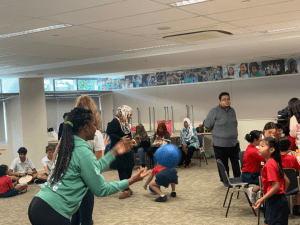After our first two visits with the children, I feel it is important to highlight the challenges that have been undertaken and identify ways in which we can develop new skills to improve them. One of the main barriers that we have faced is our barriers in communication, as we can only speak and understand English we cannot communicate with the students with a hearing impairment without an interpreter. In the next seven sessions, the children are unable to visit us, and as such we will be learning Singapore sign language through the use of online videos, in order to be able to make an effort to be able to interact with all students. We are also developing our body language and facial expression to appear more friendly and approachable, with the goal of allowing the children to feel comfortable in the new environment. This was important in tackling learning outcome 2, we were adapting to the challenges that faced us and took action through our planning to improve this and achieve our goal.
Another piece of information that we discovered was that the visually impaired (VI) and hearing-impaired (HI) children could perform activities alongside each other. Initially, we had developed separate activities for the VI and HI children, however, through trial and error, we discovered that the children prefer to choose their own activities rather than to be assigned ones, and can often interact with all kinds of students. This allowed us to see the students working collaboratively on different art pieces, no matter the disability. It also changed the way that we collaborated on the activities.
One main challenge that we faced was surrounding commitment. We only have a limited number of sessions to plan our activities and brainstorm new ways to keep the children engaged. One of the things we noticed was that attendance was much lower for the sessions were we planned which in turn, made it very difficult to run sessions with the children. This was a challenge we faced which we had to overcome with collaboration. We divided the volunteers up into groups, each leading a different activity. Even when volunteers were not at the sessions, we learned that good collaboration and communication was crucial to maintaining organisation in the sessions. We achieved this through emails and follow-ups to delegate tasks, running smooth and successful sessions with the children, tackling learning outcome 5.


